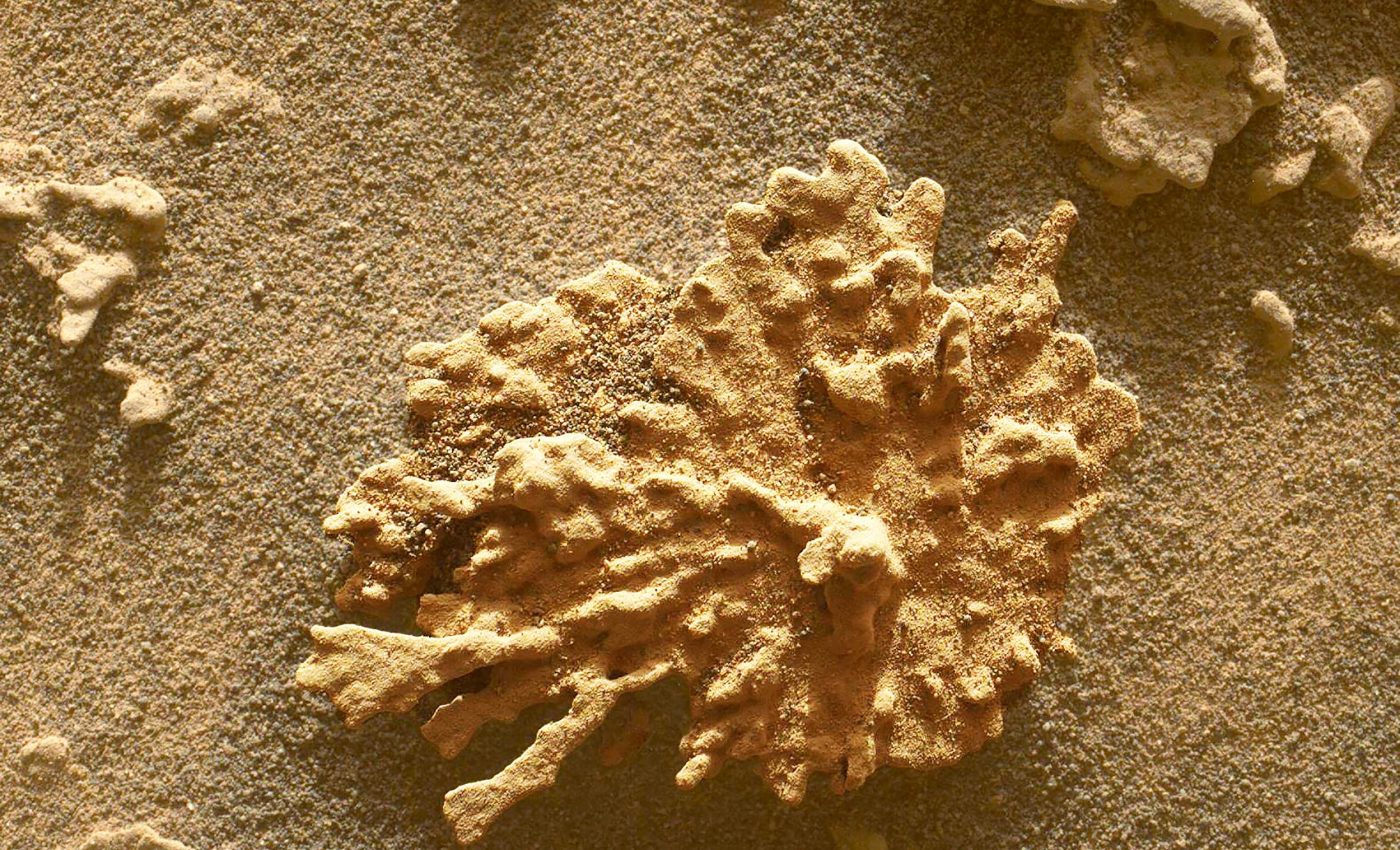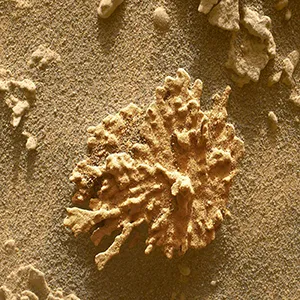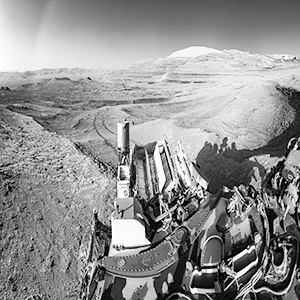
Curiosity rover celebrates 13 years on Mars by finding a rock that looks just like coral
More than thirteen years after landing on Mars, NASA’s Curiosity rover is still hard at work. But like any aging machine, it’s had to learn how to do more with less.
Thanks to some clever software upgrades, Curiosity now works more efficiently – saving energy and making the most of each Martian day.
The team behind Curiosity, based at NASA’s Jet Propulsion Laboratory in Southern California, has introduced new capabilities that let the rover multitask and manage its power more efficiently. These updates are helping stretch its energy reserves further than ever.
Curiosity runs on a nuclear power source called a multi-mission radioisotope thermoelectric generator, or MMRTG.
It’s the same system that is used by its younger sibling Perseverance and even the Voyager spacecraft, which launched in the 1970s.
It’s reliable but, over time, the energy output drops as the plutonium slowly decays. That means the batteries take longer to recharge – leaving less juice for science.
Science drains precious rover power
Curiosity is currently exploring an area filled with strange, crisscrossing rock ridges known as boxwork formations. These natural features likely formed billions of years ago from the effects of underground water.
Stretching for miles along the slope of Mount Sharp, they may hold clues about how long Mars remained habitable as it dried out.
Scientists are especially interested in whether microbial life could have existed underground during that transition.

But studying Mars isn’t easy. Every test, drive, photo, and radio transmission draws from Curiosity’s limited power.
Its cameras, robotic arm, scientific instruments, heaters, and communication systems all depend on its batteries. And those batteries have to last.
Curiosity learns to multitask
To tackle the challenge, the engineering team rethought how the rover spends its day. Instead of doing one task at a time and then napping to recharge, Curiosity now combines tasks whenever possible.
For instance, it can now transmit data to a passing orbiter while driving or taking pictures – something it couldn’t do before.
This reduces how long the rover needs to stay active and keeps heaters and instruments from staying on longer than necessary. That means more power saved.
“We were more like cautious parents earlier in the mission,” said Reidar Larsen of NASA’s Jet Propulsion Laboratory, which built the rover.
Larsen led a group of engineers who developed the new capabilities. “It’s as if our teenage rover is maturing, and we’re trusting it to take on more responsibility. As a kid, you might do one thing at a time, but as you become an adult, you learn to multitask.”
Another new feature lets the rover decide when it’s time to nap. Engineers usually build in extra time in case something goes wrong.
Now, if everything goes smoothly and Curiosity finishes early, it powers down on its own. That means less battery drain and more energy ready for the next day. Even saving just 10 or 20 minutes here and there adds up – especially over years of exploration.
Fixes, workarounds, and upgrades
Curiosity has already logged over 22 miles (35 kilometers) across rocky, dusty terrain on Mars. Along the way, it’s faced more than its share of wear and tear. But the team has stayed ahead of the curve.
When one of its camera filter wheels jammed, they found a way to keep taking stunning color panoramas. When the drill system developed mechanical issues, they redesigned how it collects rock samples.
To protect the rover’s damaged wheels from further harm, engineers also created a new driving algorithm that reduces wear.
Even if the wheel treads become unusable, Curiosity could keep moving using the inner parts of the wheels. The research team isn’t worried – it’s already proven those wheels can handle many more miles.

Curiosity’s search isn’t over
These upgrades may not sound flashy, but they’re making a big impact. By squeezing more science out of every watt, Curiosity can keep exploring longer – and answering more questions about Mars’ past.
The mission’s focus remains the same: figure out how a once-wet planet became a frozen desert, and whether life ever had a shot at surviving beneath its surface.
But now, thanks to smart engineering and a few power-saving tricks, Curiosity can keep chasing those answers for years to come.
Information taken from an online press release by NASA’s JPL.
—–
Like what you read? Subscribe to our newsletter for engaging articles, exclusive content, and the latest updates.
Check us out on EarthSnap, a free app brought to you by Eric Ralls and Earth.com.
—–













